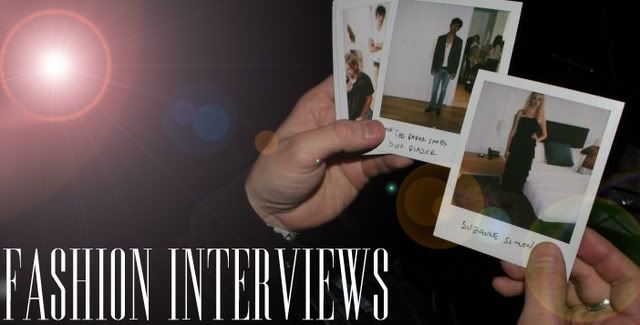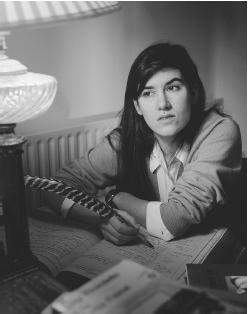VIVA MARIACARLA.With a Moonlike face, fragile and sharp, intense expressionism, sparkling 1.77m, Mariacarla, the Roman, has a little something of Giulietta Masina, the most emotional neorealism heroine. Physically made for cinema, she would have probably puzzled Fellini. She inspires to Fashion a Strada of today.
A GIRL OF STYLE. Mariacarla Boscono. She masters extravagance with grace, prefers dresses that tell a story, and dresses up as if she was in a fairy tale. Fashion heroine and full of imagination, Mariacarla makes her life very beautiful.
ONE GIRL. Mariacarla is a girl from Rome, who loves cooking for a lot of people. She was first spotted by Karl Lagerfeld, who requested her for Fendi. She started her supermodel career with an exclusive contract of three years with Comme des Garçons. Short hair, pale face, black eyes: the fashion, in a conceptual way. “That was my first job. Of fashion, I just knew Versace, Claudia Schiffer... it has been a shock and a great education. They taught me another way of creativity.” Then, she did many campaigns for designers such as Chanel, Jean Paul Gaultier, Versace, shows, shootings. “At that moment, I had a flight once a day.” She is obstinate, a perfectionist, and lives this intensity as a chance: “I wanted to learn from everyone, receive the maximum and give the maximum. We have one life to live!” Today, she is enrolled in the Lee Strasberg dramatic art lesson in New York.
ONE STYLE. “Hippy style, for its concept of freedom. Not for its look. Bohemian, for the colours of travel. Eclectic, but never looking like trash.” She wears fur, vinyl, wears a robe du soir for breakfast, and has dinner wearing a country Vietnamese skirt. Her allure is always a surprise. She knows the secret of a rich and very personal extravagance. Because her style is a protection, too. Mariacarla hides her shyness behind this beautiful eccentricity, which allows her to push her boundaries ahead. Dressing herself, she invents a bit of herself, too.
INSPIRATIONS. Her mother, “a fabulous & chic woman.” pushed her to cultivate her own identity not to look like everyone. “When I was a kid, I always saw her finding the perfect allure. Then, it was normal to me to find my own style. She taught me not to dress and live as the others do.” She quotes, too, the fashion world which allows her to free her personality, and be confident.
OBSESSION. Vintage dresses. She buys some and takes some in her mother’s dressing. Mariacarla’s dresses are a bit crazy and tell a story. Summer or winter, seasons do not matter. She just adds a sweat or a pair of tights. Lines from the thirties or cuts from the sixties, she makes forgetten the notion of time with a pair of Alexander McQueen platform-shoes or a pair of black vinyl leggings. She is never retro.
FAVOURITE. “My mom’s blue dress, it has little straps. It is from the seventies. I love it. I wear it in evening with a jewel, barefoot on the beach, under a fur by a snowy day in New York.”
SECURITY. A long black and yellow Sonia Rykiel dress. “I feel so comfortable in it. It is like I am in a blanket.”
FIDELITY. The glamorous and theatrical dress of her friend Riccardo Tisci.
ACCESSORIES. “My style is already too much, so I do the real minimum. As she is myopic, she collects glasses. She knows how to wear them by day or night.
TABOO. “These Ugg boots... horrible! Definitely not my style, and moreover everyone has them.”
SHOPPING. She is scared of. Then she finds a solution: she does a unique moment of it, which looks like an adventure. Mariacarla established her network. New York, Los Angeles, or Rome, she has contacts for vintage pieces and they call her every time they have very rare outfit. As instance, Giovanna, the old lady of the Portaportese Market in Roma, keeps for Mariacarla the best things she finds. “I listen to her telling me each story of each dress and I love that. Like this, I already have a memory for each one of them.”
PASSION. Travels. She travelled on the Transsyberien, 3000km in Mongolia and travelled through Vietnam. A passion-evasion which is fundamental in a garde-robe. “In those countries, you do not just buy in a store. You buy to someone. Someone that owned this skirt or this coat for several generations.” From a Vietnamese girl, she chooses the more used skirt. From Mongolia, she takes a little hat and five folk-coats. Her outfits have so many stories to tell.
SHOES. The only thing she does not buy vintage. She has a real passion for Manolo Blahnik. Lanvin, YSL, she can wear everything.
JEWELRY. Only two rings: the anneaux trios ors de Cartier. This is a gift from her boyfriend and a little family ring in platinum and diamonds. On the evening, she can wear a big afghan necklace but she can wear, too, a surfer necklace.
HAIR. Ashy blond at natural. “But I make them darker. My mom’s interpretation: it helps me to feel stronger.”
BEAUTY. Crealine lotion, Avène products, Crème de la Mer for her sensitive skin.
HOME. Ultra minimalist. Lighten white walls, big wooden table and plexi table.
HOT LIST. Manolo Blahnik, is a total addiction! 31West 54th St., New York. Corso Como for the Ricardo Tischi's dress, Corso Como 10, Milan. The parfumerie Santa Maria Novella has just been opened in New York at Lafayette Street, but the original one is magical, 16 villa Scala, Firenze. Don't forget Frederic Boudet, my hairdresser. I'm drinking a glass of redwine while he's doing my hair. A very cool place. Salon Robert Kree, 375 Bleecker Street, New York.
credit: (mariacarlaboscono.hpg.ig)












